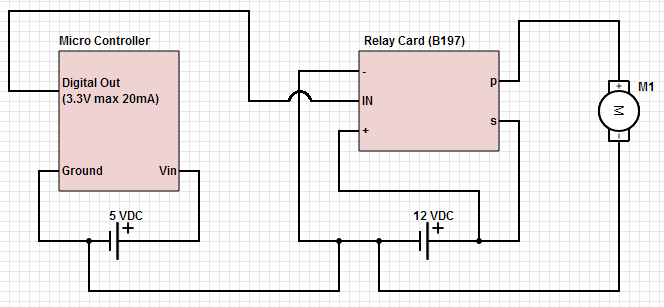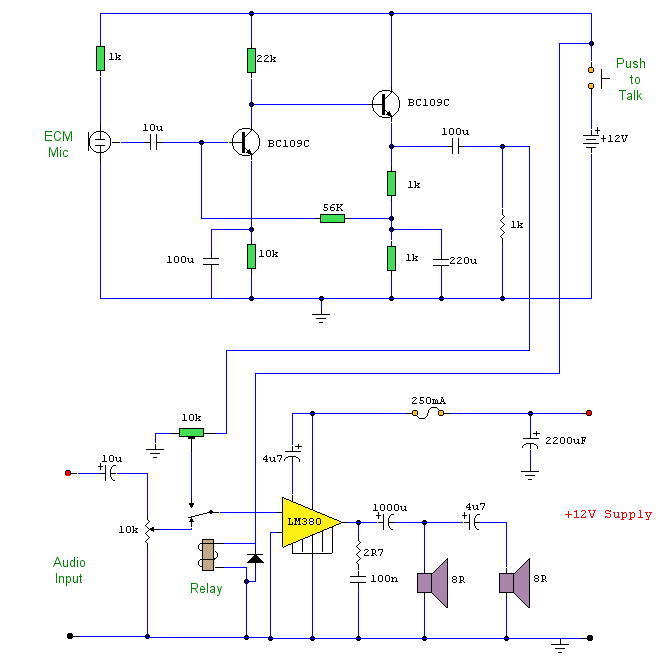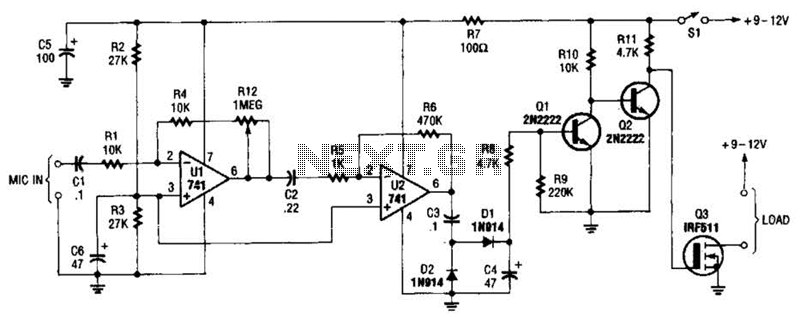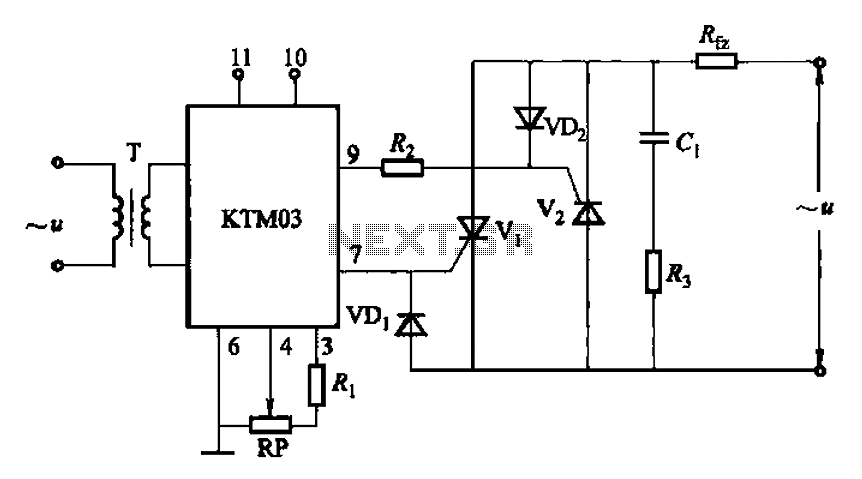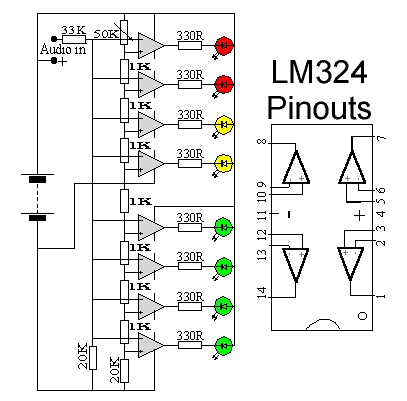
Humidity Control Switch Circuit
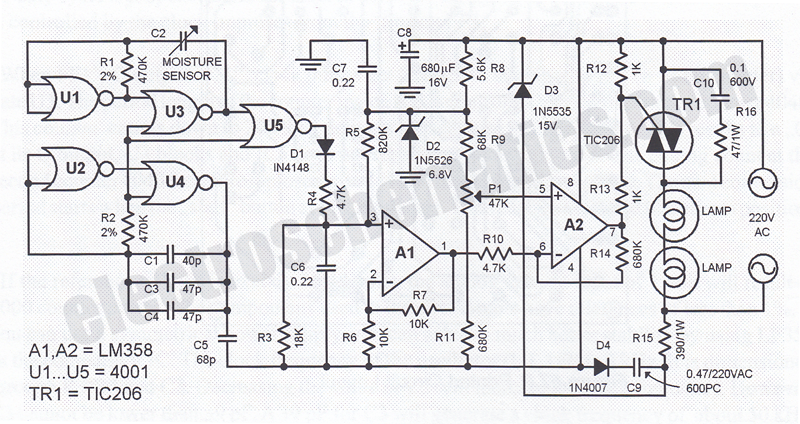
This humidity-controlled switch circuit activates and deactivates an electrical load, such as a heater, based on the moisture content in the surrounding air.
The humidity-controlled switch circuit employs a humidity sensor to detect changes in moisture levels in the environment. The sensor typically used is a capacitive or resistive humidity sensor, which outputs a voltage or resistance that varies with the humidity level. This output is fed into a comparator circuit, which compares the sensor output against a predefined reference voltage.
When the humidity level exceeds a certain threshold, the comparator output changes state, triggering a control mechanism. This mechanism can be a relay or a transistor, which then connects or disconnects the electrical load from the power source. For example, if the humidity level rises above the set point, the relay activates, turning on the heater to increase the temperature and reduce humidity. Conversely, when the humidity drops below the set point, the relay deactivates, turning off the heater.
The circuit may include additional components such as a potentiometer to adjust the humidity threshold, an LED indicator to show the operational status, and protection diodes to safeguard against voltage spikes. Power supply considerations must also be accounted for, ensuring that the circuit operates within its specified voltage range.
Overall, this humidity-controlled switch circuit is an effective solution for managing humidity levels in various applications, ensuring optimal comfort and preventing damage from excessive moisture.This humidity controlled switch circuit turns on and off an electrical load (for example a heater) depending on the moisture content of the surrounding air.. 🔗 External reference
The humidity-controlled switch circuit employs a humidity sensor to detect changes in moisture levels in the environment. The sensor typically used is a capacitive or resistive humidity sensor, which outputs a voltage or resistance that varies with the humidity level. This output is fed into a comparator circuit, which compares the sensor output against a predefined reference voltage.
When the humidity level exceeds a certain threshold, the comparator output changes state, triggering a control mechanism. This mechanism can be a relay or a transistor, which then connects or disconnects the electrical load from the power source. For example, if the humidity level rises above the set point, the relay activates, turning on the heater to increase the temperature and reduce humidity. Conversely, when the humidity drops below the set point, the relay deactivates, turning off the heater.
The circuit may include additional components such as a potentiometer to adjust the humidity threshold, an LED indicator to show the operational status, and protection diodes to safeguard against voltage spikes. Power supply considerations must also be accounted for, ensuring that the circuit operates within its specified voltage range.
Overall, this humidity-controlled switch circuit is an effective solution for managing humidity levels in various applications, ensuring optimal comfort and preventing damage from excessive moisture.This humidity controlled switch circuit turns on and off an electrical load (for example a heater) depending on the moisture content of the surrounding air.. 🔗 External reference
